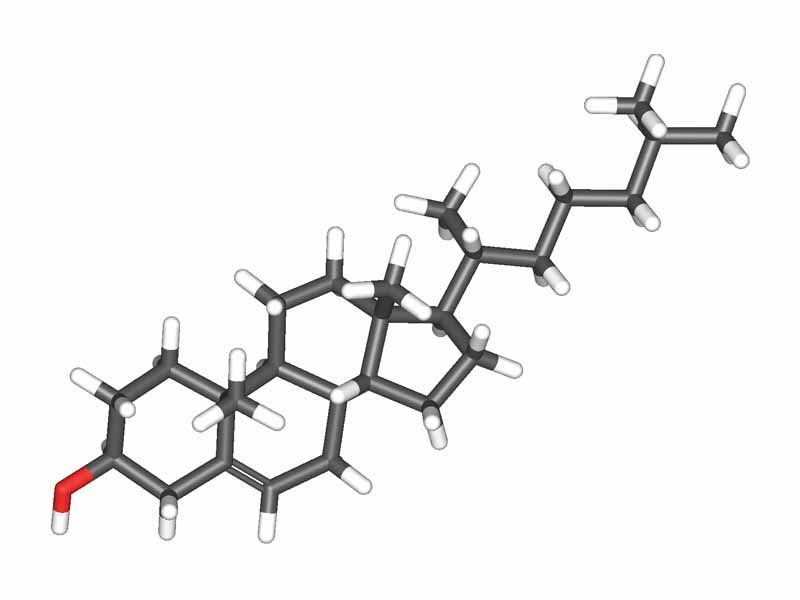Interdisciplinary Note (3 of 25)
The viscosity of a bilayer membrane depends on whether the fatty acid chains are stacked in a rigid state or exist in a relatively disordered, fluid state. In higher organisms (not bacteria), cholesterol also plays a major roll in moderating membrane fluidity. The two characteristics of the fatty acid chains that promote the rigid state are length and the degree of saturation. Long, straight hydrocarbon chains maximize Van der Waals interactions, increasing membrane viscosity (also, by related principles, increasing the melting point). Cholesterol, however, acts to decrease membrane viscosity at low temperatures, but increases it at high temperature. Fitting between the fatty acid chains, cholesterol prevents their crystallization. However, cholesterol also blocks large motions of the fatty acid chains, which, conversely makes the membrane less fluid at high temperature. In other words, cholesterol acts like a fluidity buffer for membranes.
